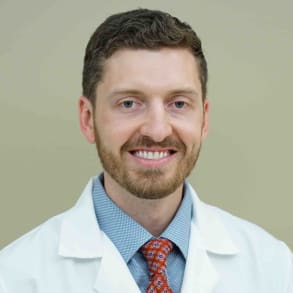Minimally invasive surgeons Brett Parker and Brenda Zosa answer questions on Paraesophageal Hernia. Questions include: When a patient should have surgery, the difference between paraesophageal hernia and sliding hiatal hernia, latest treatments, and the results of this type of surgery.
mm hmm. Okay, mm hmm. Okay. Really, any patient who is symptomatic from their parasol Fiji or hernia should be considered for a repair symptoms can range anywhere from acid reflux to more obstructive symptoms such as dysplasia or regurgitation. Um Other less common indications for repair or patients who have developed bleeding ulcers which are called Cameron's ulcers that occur from where the mucosal folds in the stomach rub against where the diaphragm is pinching. A sliding Heidel hernia is where the gastroesophageal or ge junction slides above the diaphragm, but the majority of the stomach remains in its an atomic position below the diaphragm. Most common symptoms related to this is reflux. Para esophageal hernias are where the gastric fungus actually goes above the diaphragm. And in really large ones, you can also have other organs that go above the diaphragm as well. Para esophageal hernias are more likely to have obstructive symptoms such as dysplasia or regurgitation associated with them. So around the early two thousand's there was a paradigm shift from open repair to minimally invasive repair of parapsychology hernias. And with that became uh several adjunct techniques that we used to enhance patient outcomes. So during the laparoscopic or robotic repair were able to see higher into the media steinem and dissect around the esophagus more to offload the actual tension, reduce it nicely into the abdomen and reduced recurrence rates in the operation, There are several adjuncts that we've added as well to enhance the patient's recovery. So the first one is if we get into the uh situation where the esophagus is foreshortened and it can't adequately come down into the esophagus into the abdominal compartment. The esophagus can be lengthened and through an esophageal lengthening procedure known as a collis gastro plasticky or a wedge fund ectomy. We can offload that axial tension and make it rest inside of the abdomen much more comfortably. Another thing that were commonly doing is placing absorbable mesh over the diaphragm repair and using that as reinforcement to reduce at least short term outcomes but possibly long term recurrence rates as well. Lastly, we can also perform diaphragm relaxing incisions where if the diaphragm repair has an undue amount of radial tension on the stitches, we can create a relaxing incision on the diaphragm to make it come together nicer, mm hmm. So we've gotten really good at fixing the patients acute issues, obstructive symptoms, reflux bleeding. But the main problem involving Outcomes after this type of Paris after your hernia repair revolves around recurrence rates and early on the recurrence rates were up to 50%. With the open technique As we've evolved our technique into the mentally invasive surgical approaches were able to drastically reduce that recurrence rate somewhere around the 30% range or in more recent literature, somewhere on the 10% range. Um In my opinion, it boils down to three major concepts surgeon training and experience operative techniques and patient selection. So similar to four gut is similar to colorectal surgery, forgot surgery has evolved its own subspecialty with its own fellowship training and I think that going to a expert, forgot surgeon that does a high volume of these who does the right surgery on the right patient will ultimately enhance the patient's outcomes. Patient characteristics that we know can be modified prior to surgery are similar to abdominal wall hernias controlling B. M. I. Glucose smoking, stopping medications that reduce wound healing are all things that we can control pre operatively and making sure we address those is just as important. So with the minimally invasive surgical approaches, the recoveries become quite tolerable classically when they were doing the open approaches to fix these. The recovery was painful and tedious but now the hospital length of stay time back to work. The postoperative pain have all been drastically reduced. So I don't want to understate the fact that we're doing major abdominal surgery. We're just doing it through small incisions and so typically the patient can expect to stay in the hospital 1-2 nights depending on their ability to swallow their diets modified to liquids for the most part for the first couple of weeks and then progress slowly over time. And we limit their heavy lifting for several weeks. Post post operatively as well. Okay. Yeah. Mhm.




